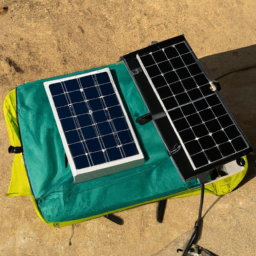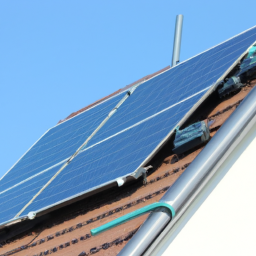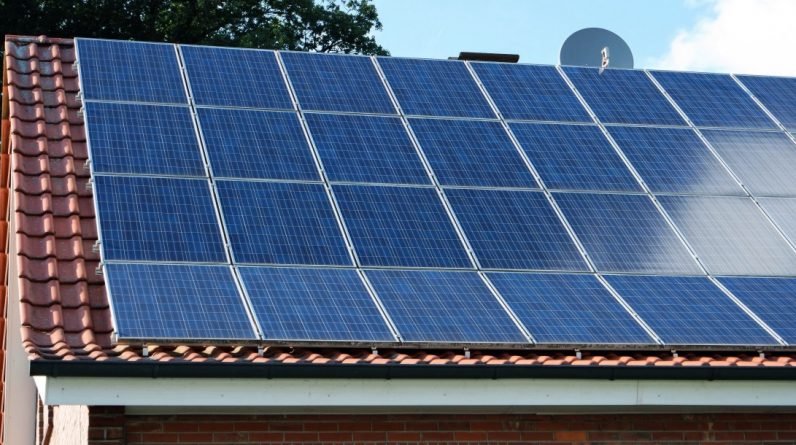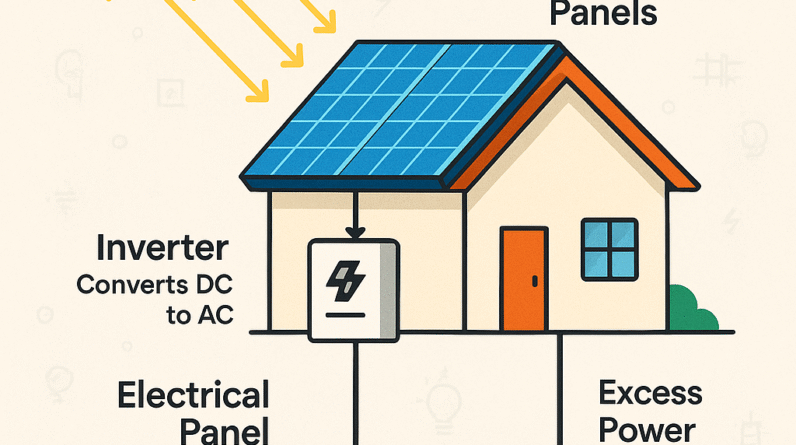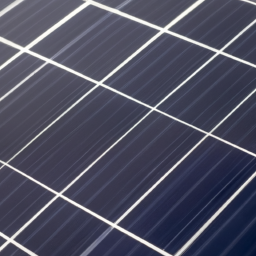
Thin-Film vs Crystalline Solar Panels: Which is Better?
Thin-Film vs Crystalline Solar Panels. As the demand for renewable energy sources continues to grow, solar panels have become an increasingly popular choice for homeowners and businesses alike. Among the various types of solar panels available, thin-film and crystalline solar panels are two of the most widely used technologies. Each type has its own advantages and disadvantages, which can influence your decision when considering solar energy for your property. In this blog, we’ll compare thin-film and crystalline solar panels to help you determine which option is better for your needs.
Understanding Thin-Film Solar Panels
Thin-film solar panels are made by depositing a thin layer of photovoltaic material on a substrate. This material can be cadmium telluride, amorphous silicon, or copper indium gallium selenide. Thin-film panels are lightweight, flexible, and can be manufactured using less material than traditional solar panels. Because of their design, they can be integrated into building materials, such as windows and roofs.
Thin-film solar panels are a type of photovoltaic technology that offers a unique approach to harnessing solar energy. Unlike traditional crystalline silicon panels, which are typically rigid and bulkier, thin-film panels are made by depositing one or more thin layers of photovoltaic material onto a substrate. This allows them to be lightweight, flexible, and even transparent, making them suitable for a variety of applications, such as building-integrated photovoltaics and portable electronic devices. Despite having a lower efficiency compared to their crystalline counterparts, thin-film solar panels excel in low-light conditions and perform better in higher temperatures. They are often more cost-effective to produce and can be manufactured using a range of materials, including cadmium telluride, amorphous silicon, and copper indium gallium selenide. Overall, thin-film solar technology represents an innovative and adaptable solution in the quest for sustainable energy.
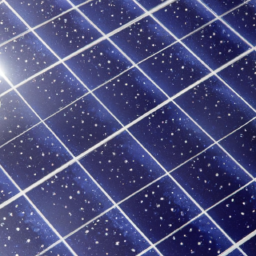
Advantages of Thin-Film Solar Panels
Thin-film solar panels offer several advantages that make them an attractive option for solar energy generation. One of the primary benefits is their lightweight and flexible design, allowing for easy installation on various surfaces, including curved or uneven rooftops. Furthermore, these panels typically perform better in low light and high-temperature conditions compared to traditional silicon-based panels, making them ideal for diverse climates. Thin-film technology also allows for reduced material use and lower production costs, making them a more economically viable option in certain applications. Additionally, their aesthetic versatility can blend seamlessly into building materials and structures, enhancing the overall design without compromising functionality. Overall, thin-film solar panels present a promising alternative for sustainable energy solutions.
- Lightweight and Flexible: Thin-film panels are less bulky than crystalline panels, making them easier to install and ideal for surfaces that cannot support the weight of traditional solar panels.
- Better Performance in Low Light: Thin-film technology tends to perform better in low-light and high-temperature conditions, which can be beneficial in certain climates.
- Lower Manufacturing Costs: The production of thin-film panels often requires less energy and raw materials, leading to lower costs compared to crystalline panels.
Disadvantages of Thin-Film Solar Panels
Thin-film solar panels offer several advantages, such as flexibility and lightweight design; however, they also come with notable disadvantages. One of the primary drawbacks is their lower efficiency compared to traditional crystalline silicon solar panels, which means that more space is required to generate the same amount of electricity. This can be a significant limitation for residential applications where rooftop space is limited. Additionally, thin-film panels typically have a shorter lifespan and may degrade more quickly, leading to a shorter warranty period and potentially higher costs over time. They also tend to have a higher degradation rate when exposed to environmental factors like humidity and temperature fluctuations. Furthermore, the manufacturing process for some thin-film technologies can involve toxic materials, raising concerns about environmental impact and recycling challenges at the end of their lifecycle.
- Lower Efficiency: Thin-film solar panels generally have lower efficiency rates compared to crystalline panels, which means you may need more surface area to achieve the same energy output.
- Shorter Lifespan: These panels typically have a shorter lifespan and warranty period than their crystalline counterparts.

Understanding Crystalline Solar Panels
Crystalline solar panels are made from silicon crystals and are divided into two main categories: monocrystalline and polycrystalline. Monocrystalline panels, made from a single crystal structure, are known for their high efficiency and long lifespan, while polycrystalline panels are made from multiple crystal structures and are often less expensive.
Understanding crystalline solar panels is essential for anyone interested in harnessing solar energy efficiently. Crystalline solar panels, primarily composed of silicon, are the most widely used type of photovoltaic technology. They come in two main varieties: monocrystalline and polycrystalline. Monocrystalline panels are made from a single crystal structure, offering higher efficiency and a sleeker appearance, while polycrystalline panels are made from multiple silicon crystals, making them more affordable but slightly less efficient. Both types convert sunlight into electricity through the photovoltaic effect, where sunlight excites electrons in the silicon, generating a flow of electric current. Factors such as solar panel efficiency, energy output, and installation costs are crucial when considering these panels for residential or commercial use. By understanding their characteristics, potential users can make informed decisions to maximize their investment in renewable energy.
Advantages of Crystalline Solar Panels
Crystalline solar panels, known for their efficiency and reliability, offer several advantages that make them a popular choice in the renewable energy market. Firstly, they typically have higher energy conversion rates compared to thin-film solar panels, meaning they can generate more electricity from the same amount of sunlight. This high efficiency allows for greater energy output, even in limited space, making them ideal for residential and commercial applications. Additionally, crystalline solar panels have a longer lifespan, often exceeding 25 years, which provides a substantial return on investment for users. Their durability also allows them to withstand harsh weather conditions better than other types of panels, further enhancing their reliability. Furthermore, advancements in technology and manufacturing processes have led to cost reductions, making crystalline panels more economically viable for a broader audience. Overall, the superior performance, longevity, and improving affordability of crystalline solar panels solidify their status as a leading option for solar energy solutions.
- Higher Efficiency: Crystalline panels usually offer higher efficiency rates, enabling them to generate more electricity from less space.
- Longer Lifespan: With proper care, crystalline panels can last 25 years or more, making them a reliable long-term investment.
- Better Performance in High Temperatures: Monocrystalline panels, in particular, sustain efficiency even under high temperatures.
Disadvantages of Crystalline Solar Panels
While crystalline solar panels are widely used and celebrated for their efficiency and longevity, they do come with several disadvantages. One of the primary drawbacks is their higher manufacturing cost compared to thin-film solar panels, which can make them less accessible for some consumers. Additionally, crystalline solar panels are more susceptible to damage from extreme weather conditions, such as hail and strong winds, often requiring more robust mounting systems. Their performance can also decrease in high temperatures and shading, leading to reduced energy output. Finally, the production process of crystalline panels can be less environmentally friendly, as it often involves the use of hazardous materials and generates significant waste. These factors can complicate the overall sustainability of crystalline solar technology.
- Higher Costs: The production of crystalline panels requires more energy and raw materials, often leading to higher upfront costs.
- Weight: These panels can be heavier, requiring sturdier mounting systems and potentially making installation more complex.
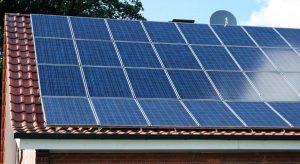
Conclusion: Which is Better?
When deciding between thin-film and crystalline solar panels, consider factors such as your budget, space availability, and specific energy needs. If you have limited roof space and seek higher efficiency, crystalline panels are likely the better choice. Conversely, if you need flexibility and lower initial costs, thin-film panels may better suit your goals. Ultimately, evaluating your unique circumstances will help you make the best decision for your solar energy investment.


